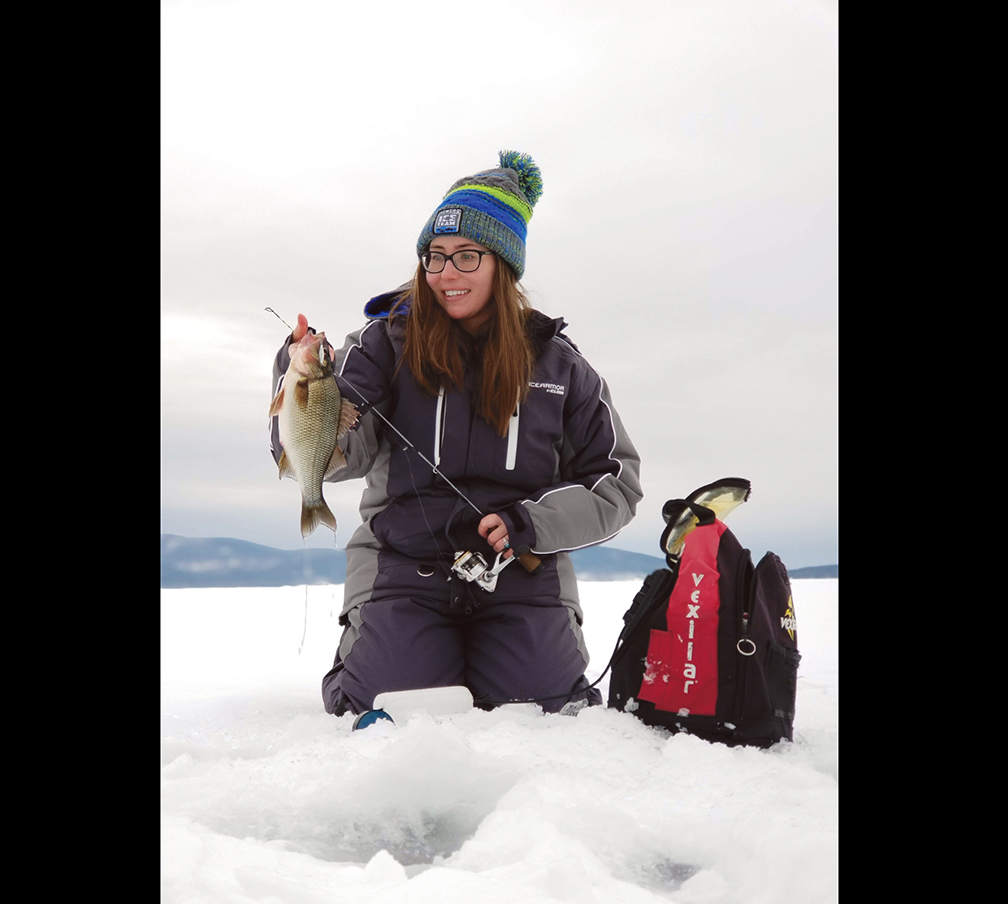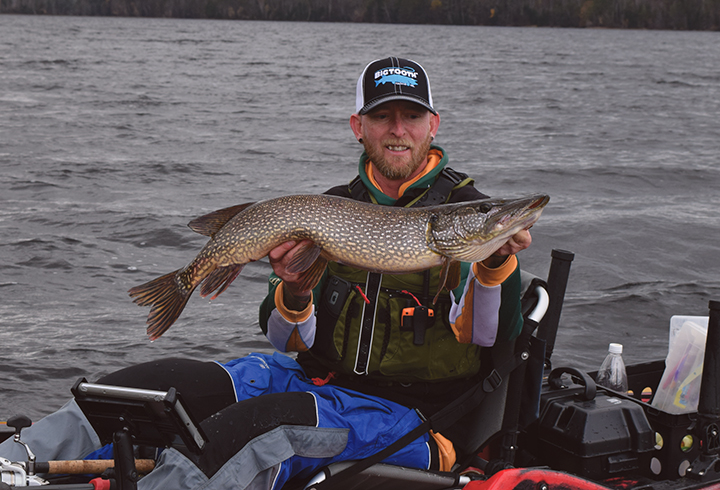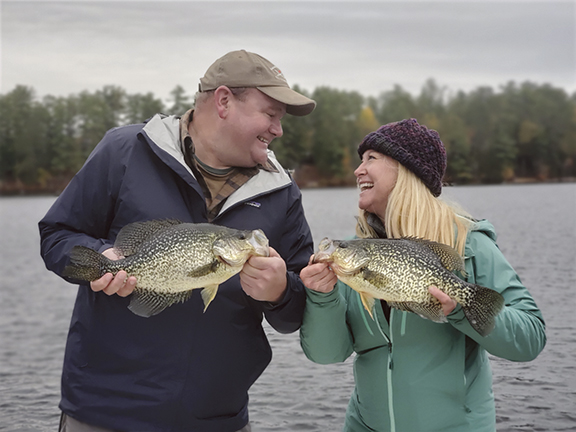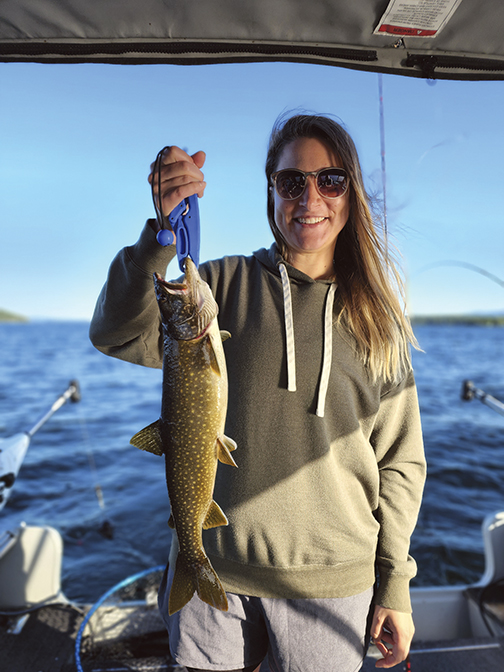Safety First

PHOTO: Floating ice fishing suits are also available for women. Pictured is lady angler, Sam wearing a women’s Glacier Suit from Clam Outdoors.

By Tim Moore
Contributing Writer
As we progress into the month of December, skims of ice will turn into layers thick enough to support a person. There might already be fishable ice in the northern portion of many states. For many ice anglers, the temptation to be the first to drop a line through the ice is real, making now the time to start thinking about safety. Every year many people die and countless more need to be rescued after falling through the ice. Early ice is one of the most dangerous times of the entire ice fishing season. Since ice never forms uniformly due to varying temperatures, current, and other natural forces, it is important that you never assume ice is safe.
There are many variables when talking about safe ice thickness such as how quickly the ice formed and whether it snowed or thawed during formation. Quickly forming (clear ice) is the strongest, while ice that has partially thawed during formation or had snow temporarily interrupt the freezing process will be weaker as there will be more air trapped inside. The only way to know how thick and how strong the ice you want to fish on is to check it as you go.
A chisel (or spud bar) is a must-have for me when venturing onto a frozen body of water for the first time each season. I have seen ice thickness change from four inches to two inches in just ten feet, so check often. My general rule of thumb is if I can hit the ice (hard) with three hits of the spud bar, it will support my weight. If the spud bar punches through on the second hit, I turn around immediately. If it punches through on the third hit, I will do a more in-depth check in that spot to gauge the thickness of the ice before I proceed. Once I determine that the ice is safe, I use my spud bar like a walking stick and drive it into the ice as I walk. If the sound the spud bar makes changes, then so has the thickness of the ice and I stop and recheck the thickness.

There is a plethora of other safety items you can bring on the ice. Good traction such as Kahtoola Microspikes are a must for me and my clients. Traction not only helps protect you from falling and injuring yourself, but it is essential should you need to help rescue another person. Companies such as Clam Outdoors offer safety gear, such as throw ropes and floating safety picks. They also make ice fishing suits, such as the Ascent and Rise suits for men and the Glacier Suit for women, that offer added buoyant liners to keep you afloat should you fall through the ice. In today’s hi-tech world there is no need to take risks. There is a tool for every job and safety should come first.
If you drive a snowmobile or ATV onto the ice, I highly recommend looking into a Nebulus Flotation Device. It is an inflatable device that attaches to the frame of your machine. Should you go through, a quick pull of the device’s yellow handle deploys a life raft that allows the machine to hang below from four straps, while up to three anglers can get in the raft, and out of the frigid waters. It’s a worthwhile expense, and one you should only need to make once. I keep one attached to my snowmobile, even though I hope it never gets deployed.
I want to scratch the ice fishing itch as bad as the next angler. I was on the shore of the northern end of Winnipesaukee last week and there was skim ice along the shore, meaning it won’t be long if the weather cooperates. Don’t get complacent this season when your lakes and ponds begin to freeze. Our friends and families are far more important than a day spent on a block of ice trying to outsmart a fish. If you can’t afford to take advantage of some of the newer safety gear on the market. Stick with the basics and use common sense. A little common sense goes a long way. Remember that there is no such thing as safe ice and always proceed with caution.
Tim Moore is a full-time professional fishing guide in New Hampshire. He owns and operates Tim Moore Outdoors, LLC. He is a member of the New England Outdoors Writers Association and the producer of TMO Fishing on YouTube. Visit www.TimMooreOutdoors.com for more information.



